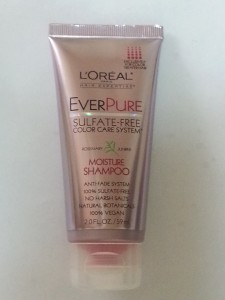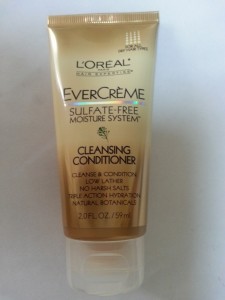Nowadays, everyone seems to be on a goosechase for Sulfate Free and Paraben Free shampoos and conditoners
So it got me thinking…. Is this just the latest buzzword or is there some merit to our diligent pursuit!
What is Sulfate Free and why does it exist in our Shampoo’s?
Firstly, Sulfate exists in mostly any products where you see bubbles! Without sulfates there is usually no lather or bubbles. But believe it or not – bubbles and lather have nothing to do with how clean it will make something!!!
So all that lather we thought was helping us become squeeky clean – really was just something called SLS and it could be a reason why a lot of people are having scalp or skin irritation and also dry hair.
The full word is actually Sodium Lauryl Sulfate. It is known to get rid of oil very efficiently but for that reason is also quite harsh.
It is a common ingrediant in shampoo’s. If you look at almost any label around your house that is attached to any kind of soap, cleaning agent, shampoo, degreasers or bubble baths and you will find the ingredient Sodium Laurel Sulfate.

Shampoo Sans SLS is recommended for those who color their hair (nowadays how many people do you know – that don’t color their hair!!) The salts in SLS strip hair colour, causing your colour to fade more quickly. People who have curly hair also find an advantage of sulfate free because it dries the hair out less.
So just in case you or your children have particulary sensitive skin (maybe eczema, acne, psoriasis or a dry scalp) you should def try to throw out the products or the bubble baths that contain sulfate) It could change a lot of the situation.
Trust how you feel after you wash your hair . Is your scalp feel better? Does your hair feel better?
Here are some brands that are sulfate free – 
1) Burt’s Bees Very Volumizing Pomegranate & Soy Shampoo
2) L’Oréal EverPure Rosemary & Juniper Volume Shampoo
3) Alba Hawaiian Honeydew Nourishing Hair Wash
4) Desert Essences Italian Red Grape Shampoo
5) Marc Anthony Be Ageless Advanced Colour Protect Anti-Aging Shampoo
Now – on to Parabens (which is an entirely different chemical)
Unlike Sulfate which is used for bubbles, parabens is almost all cosmetics and personal care products (soap, moisturizers, shaving cream, deoderant). They are preservatives that increase shelf live of a product and prevent bacterial growth and fungi. These preservatives are formed by alcohol and acid combined.
But some think that parabens may be linked to breast cancer and fertility issues. There are studies that show that parbans are found in breast tumors (FDA of course tells us not to be concerned between the co-relation but I use all deoderants that are paraben and aluminum free – which I will write about in another blog)
Be careful though, sometimes when parabens are removed from a product, there is a more dangerous one put in (namely propyl or butlyl paraben – anything that releases formaldehyde)
There is definitely an increased movement towards paraben free. And I don’t think it hurts to be a little more chemical free. Most makeup, skincare and health and beatuty products are now making paraben free versions.
I read a story about former model Josie Maran, who created her own makeup line with no parabens along with other things, as she grew up with a family with cancer and from a young age became cognizant of things with chemicals in it or conscious of natural ingrdiants. Her line of products are used by many celebrities and those that are in search of good chemical free makeup.
Makers of products in this category also include Dr. Hauschka, the Body Shop, Tata Harper Skin Care, Aveda, Tom’s of Maine, Kiehls, Philosophy, L’Occitane and Sonya Dakar. Resources for finding paraben-free products include the Environmental Working Group’s Skin Deep Database (Cosmeticsdatabase.com), the Organic Consumer’s Organization Coming Clean Campaign (Organicconsumers.org) and the Campaign for Safe Cosmetics (Safecosmetics.org).
Parabens, like Sulfate cause a lot of skin irritation and it is important to stay clear of them for yourself and for small children. They create allergic skin reations. Be aware of them as they are used in cosmetics, pharmaceuticals and skin products including night facial creams, day facial creams, body moisturizers and lotions. They are also found in other items used for personal hygiene such as deodorant, toothpaste, shampoo and shaving gels.
Be conscious of things around you.
